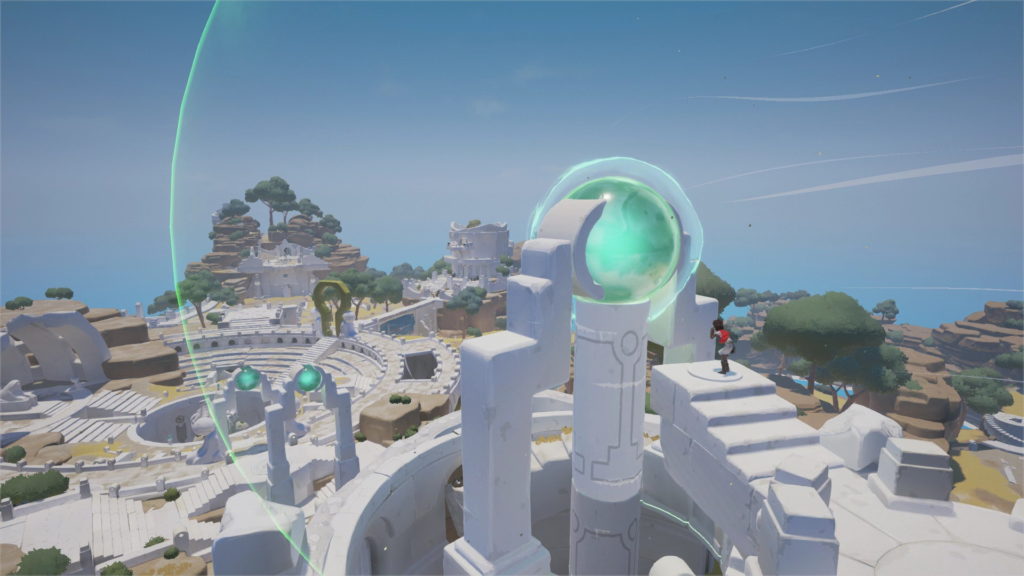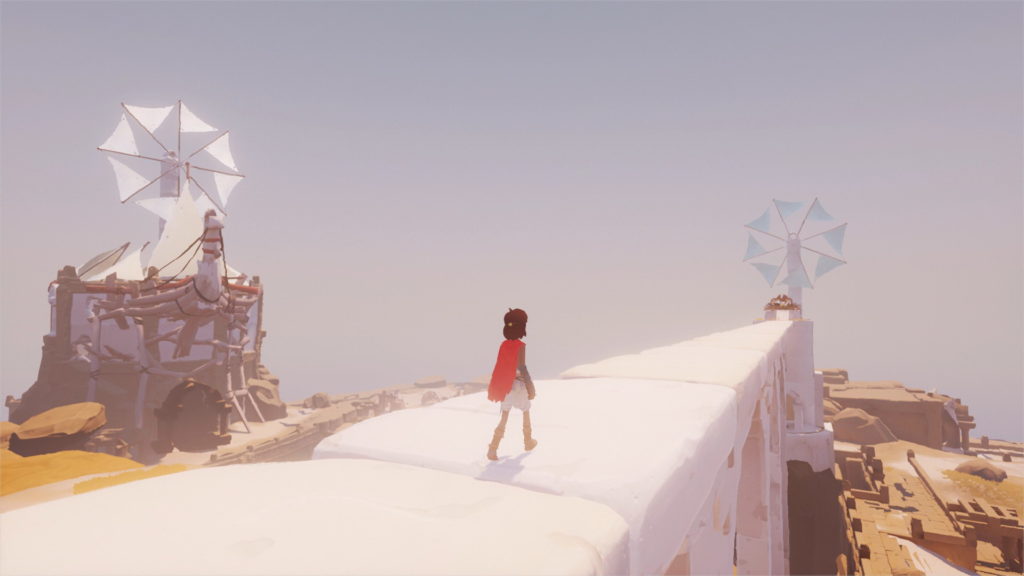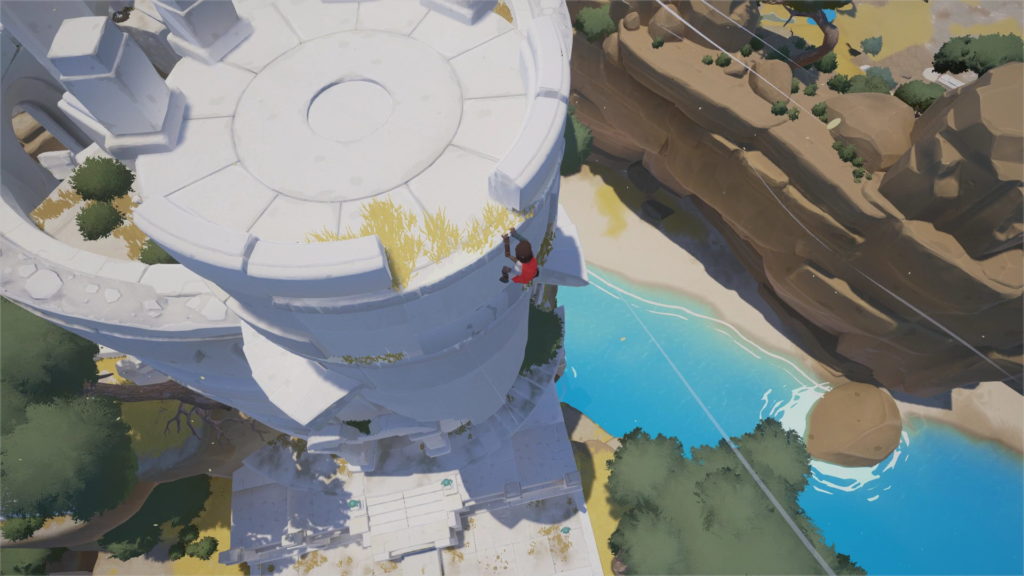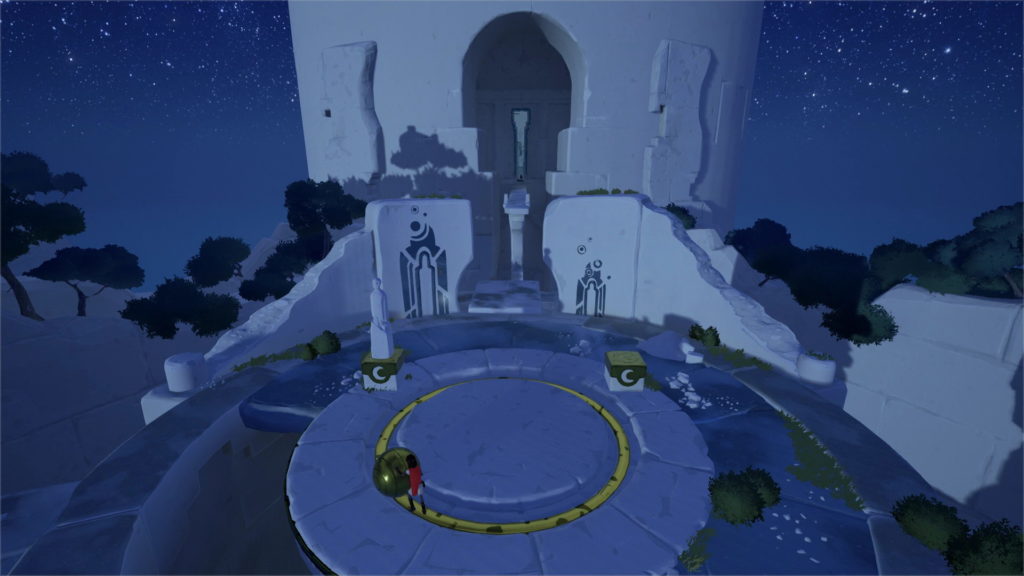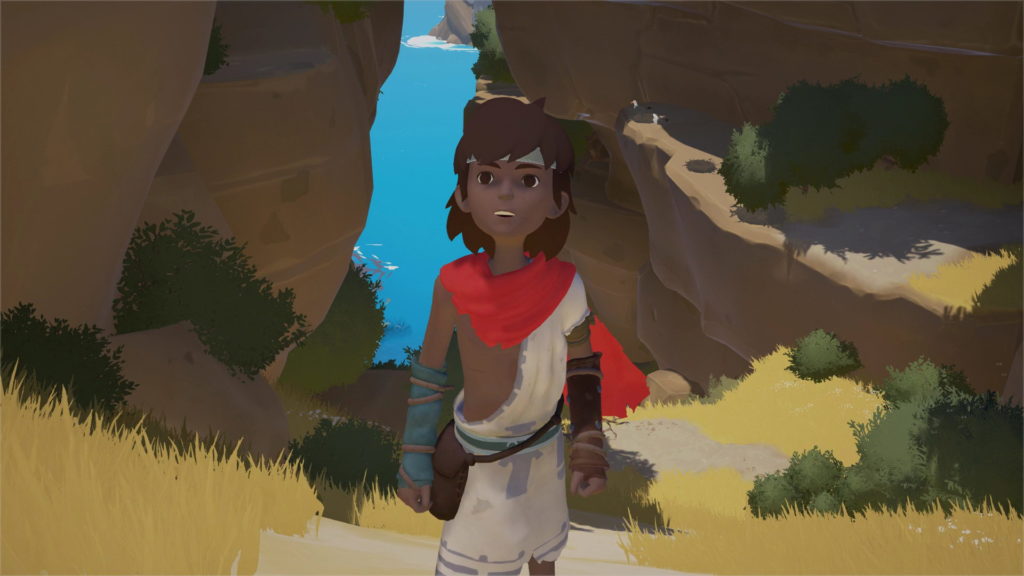After you wake up on the shores of a mysterious and desolate island, Rime’s inspirations become immediately obvious. Elements from Team Ico’s work and several nods to Journey become clear in the opening levels of the game. And while Rime does make some interesting design choices, specially in delivering its narrative and directing the player along a predesignated path, Rime’s powerful closing is what truly defines it, and leaves a lasting impression on the player.
You play as a young child, seemingly stranded on a deserted island, with a tower in the distance. The tower appears to be the key to unlocking the mysteries of the island, and eventually leaving it behind. As you slowly start exploring, stunning vistas and gorgeous landscapes greet your eyes. The island, while desolate, is not lifeless. Crabs scuttle along the beaches, boars go about eating fruit, and birds perch atop high ledges. The you come across ruins of structures, both large and small, built by unknown entities, and the structures themselves house puzzles that you need to solve in order to keep progressing towards the tower.
With a heavy emphasis on exploration, the puzzles are never too complex. Their main objective is to take you across the place, show you the sights, and upon being solved, offer a grand audiovisual presentation leading you into the next section or area. They can, however, feel convoluted at times simply because the game relies on calling your attention via visual cues with no hud elements. The lack of hud elements does lead to an overall stellar presentation throughout. Only once was I ever stuck on a puzzle, and for the most part it was my fault for not exploring the level fully to discover a hidden room around a corner.
There’s a fair bit of platforming and environmental manipulation involved in the puzzles, and the game controls pretty well in that regard. Jumps would land precisely, and moving things about felt uncomplicated. The levels themselves are gigantic, ranging from the initial lush landscapes to deserts, and more. There are a total of five levels, with their own distinct look and feel. While the overall puzzle elements remain the same, there are unique challenges or obstacles presented in each level which keeps the gameplay from feeling stale.
Rime is one of the prettiest game I have played lately, and its art design is the primary reason for it. It has a look similar to The Witness and Wind Waker, with a vibrant color palette and soft edges. The sights that it shows you are breathtaking, and the musical score is top notch. The sweeping music is highly evocative, and succeeds in maintaining the tone that the game is going for.
It’s not until the very last level that Rime starts revealing what it really is all about, and the ending resonated strongly with me. It told a very personal story, which may not be obvious during the first playthrough, but once you complete the game and see the names of the levels in the ‘replay’ option, the level design starts making a lot more sense, and the personal narrative becomes more evident. My only gripe here is that those intents are not clear anywhere organically through most of the game, and the game is worse for it.
I had heard a lot of stories about Rime undergoing a troubled development, though the development team denies it. And, as far as the final game is concerned, I feel inclined to believe them.T The game feels cohesive and progresses steadily throughout.
I absolutely enjoyed my time with Rime, and that ending is something I will always remember. It may not have a lot of depth to its gameplay, but what it has is solid. A great visual aesthetic and strong musical score will grab your attention for the most part, while the island’s mysteries and the game’s narrative hook will take you the rest of the way.
Register with us for the best in gaming, and join us for video game discussions on our forums.



